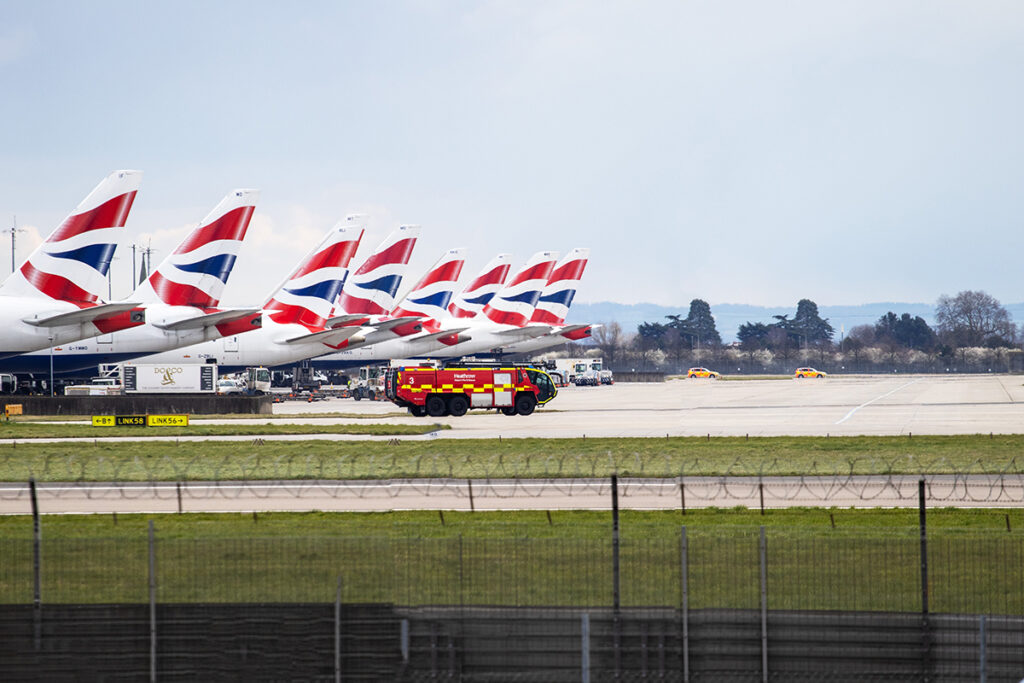A major power outage near London’s Heathrow Airport—Europe’s busiest—has brought global air travel to a near standstill. With more than 1,350 flights already impacted and ripple effects reaching every continent, industry experts warn that it could take up to a week for operations to return to normal.
A Chain Reaction Across the Skies
A fire-triggered power outage on Friday forced the complete shutdown of Heathrow Airport, one of the world’s largest travel hubs. According to Flightradar24, at least 120 planes were en route to Heathrow when the sudden closure was announced. Heathrow, which handles nearly 291,000 passengers a day, connects London to over 230 destinations in almost 90 countries.
The airport is home to more than 90 airlines, including British Airways and Virgin Atlantic. A Heathrow spokesperson explained, “As the busiest airport in Europe, Heathrow uses as much energy as a small city, therefore getting back to a full and safe operation takes time.”
Slow Steps Toward Recovery
Despite the chaos, some progress is underway. “We’re pleased to say we’re now safely able to begin some flights later today. Our first flights will be repatriation flights and relocating aircraft,” said Heathrow in a statement.
“We hope to run a full operation tomorrow,” the spokesperson added. Still, the airport has advised passengers not to travel to Heathrow and to check with their airlines for updates.
How Long Will the Turbulence Last?
The recovery isn’t expected to be quick. “The impact of this incident can cascade over several days, as aircraft, crew, passengers are out of place,” said aviation analytics firm Cirium, which noted over 1,200 scheduled flights between Friday and Saturday alone.
Paul Charles, CEO of the PC Agency, estimates that “it could be a week at this rate before things are back to normal.” He cited the enormous costs piling up, including aircraft repositioning and added accommodations. “That is based on all airlines being affected,” he explained, predicting up to $35 million in losses.
Global Airlines Feel the Shockwaves
Airlines around the world have scrambled to adapt. United Airlines reported that seven flights were either rerouted or returned to their origin. The airline is offering flexible options, including rebooking through Paris, Amsterdam, or Brussels.
Singapore Airlines, Air France, and Cathay Pacific all canceled or diverted multiple flights. Virgin Atlantic advised, “If you are traveling to or from London Heathrow today, please do not proceed to your departure airport at this time,” and added they are offering rebookings and refunds.
Even Ryanair, a low-cost carrier, stepped in with eight “rescue flights” between Dublin and London Stansted.
Stranded Passengers, Stalled Plans
Many passengers have been left stranded or forced to detour. Kim Mikkel Skibrek, a US-Norwegian citizen, had his Delta Air Lines flight turn back to Minneapolis after three hours en route to London. “People were frustrated… but now it seems everyone is calmer,” he told CNN, hoping to rebook soon.
Financial Fallout and Safety Focus
The losses go beyond delayed travel. Shukor Yusof of Endau Analytics predicted that the financial toll “could be in the hundreds of millions of pounds.” Meanwhile, Julia Lo Bue-Said of the Advantage Travel Partnership emphasized, “The priority for everyone is safety,” but warned that Friday’s incident, coinciding with the busiest travel day of the week, would “exacerbate” congestion at other London-area airports.
While Heathrow’s teams race to restore operations, the aftermath of this shutdown is expected to stretch into the coming week. The travel disruption has affected airlines, stranded thousands of passengers, and cost millions. As Julia Lo Bue-Said noted, “an incident like this at one of the world’s busiest airports will have a very significant knock-on impact.” Travelers are urged to remain patient, prioritize safety, and stay updated as airlines and airports gradually untangle the global mess.



